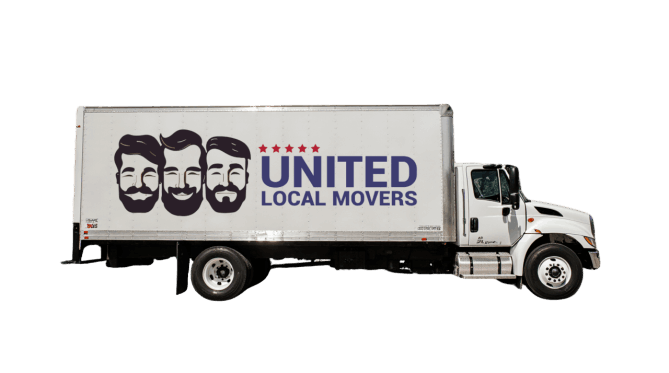Home > Interstate Moving > Moving to Hawaii > Moving to Lanai City
Moving to Lanai City
Lanai City, located in the heart of the island of Lanai, is one of the most charming and unique communities in Hawaii. With a population of about 3,000, it is the island’s only real town and the hub of daily life. Built originally in the 1920s as a plantation town by the Dole Pineapple Company, Lanai City still reflects its roots with red plantation-style houses and Cook pine trees lining its streets.
Moving to Lanai City means stepping back in time while enjoying modern comforts. The town retains a small-town charm rarely found in today’s world. It offers quiet living, a close-knit community, and access to the natural beauty of Lanai — from Hulopoe Bay to the Garden of the Gods.
At the same time, life in Lanai City can be challenging. The high cost of living, limited job opportunities, and geographic isolation mean relocating here requires preparation. But for those seeking peace, authenticity, and strong community values, Lanai City is an extraordinary place to call home.

Why More People Are Moving from the Mainland to Lanai City
Lanai City appeals to those who want simplicity, nature, and community. Many newcomers come from California, Oregon, and Washington, seeking escape from crowded cities and fast-paced lifestyles.
Affordability, compared to luxury enclaves like Manele, is one reason. Lanai City offers smaller homes and rentals that, while still expensive by mainland standards, are more accessible than resort communities.
Community is another reason. With just a few thousand residents, Lanai City is the definition of small-town living. Neighbors know one another, and community events center around Dole Park, the heart of town.
Lifestyle is also a major factor. Lanai City is surrounded by nature, from pine forests to rugged coastlines. For people seeking tranquility, hiking, and quiet beaches, Lanai offers unmatched opportunities.
Finally, culture plays a role. Lanai City maintains a strong sense of Hawaiian tradition, blending plantation-era history with modern community life.
Pros of Living in Lanai City
The strongest pro is community. Lanai City is small, welcoming, and family-oriented. Residents enjoy a strong sense of belonging.
Another advantage is authenticity. Unlike Waikiki or Maui’s resorts, Lanai City reflects the “old Hawaii” with plantation houses, small shops, and local traditions.
Natural beauty is another pro. Residents enjoy quick access to Hulopoe Bay, Shipwreck Beach, and Munro Trail. Outdoor recreation is endless.
The slower pace is appealing. Life is calm, without traffic jams or urban stress. For retirees and families, this creates peace of mind.
Finally, safety is a strength. With such a small population, crime is low, and the island feels secure.

Ready to get moved? Get a FREE quote now
Book your move easily and stress-free!
Cons of Living in Lanai City
The most obvious drawback is isolation. Lanai has no direct international airport, and residents rely on flights to Honolulu or Maui for connections.
Job opportunities are limited. Outside of tourism, government, and agriculture, industries are scarce. High-paying positions are rare.
Cost of living is high. Groceries, gas, and utilities are all more expensive due to shipping. Housing, while cheaper than Manele, is still costly compared to the mainland.
Healthcare is limited, with only basic clinics on the island. Specialized treatment requires trips to Oahu or Maui.
Finally, the small size of the community means fewer entertainment, dining, and shopping options compared to larger islands.

What Life is Like in Lanai City
Life in Lanai City is simple and community-centered. Most daily activity revolves around Dole Park, where shops, restaurants, and community events are located. Residents gather here for farmers markets, festivals, and casual meetups.
Neighborhoods consist mainly of plantation-style homes with red roofs, many dating back to the pineapple plantation era. The town’s charm lies in its historic architecture and walkable streets.
Food culture is modest but authentic. Residents enjoy local Hawaiian plate lunches, poke, and small family-run restaurants. While options are limited, the focus on community dining and local produce makes meals special.
Entertainment is rooted in community and nature. Hiking, fishing, and beach trips are part of everyday life. For nightlife or large events, residents often travel to Maui or Oahu.
For families and retirees, Lanai City offers peace, safety, and connection. For professionals, it offers simplicity and remote work opportunities, though limited job diversity may be a challenge.
Living Costs in Lanai City
Lanai City is more affordable than Manele but still expensive compared to the mainland.
| Category | Lanai City | National Average |
|---|---|---|
| Housing (Rent per Month) | $1,800 | $1,570 |
| Utilities | $210 | $180 |
| Groceries | $390 | $330 |
| Transportation | $180 | $140 |
| Healthcare | $470 | $440 |
Housing is more modest than in luxury areas, but costs remain high due to limited availability. Groceries and utilities are above mainland averages.

Ready to get moved? Get a FREE quote now
Ready to get moved? Get a FREE quote now
Schools and Education in Lanai City
Lanai City is served by Lanai High and Elementary School, a single K–12 public school that serves the entire island. With fewer students, class sizes are smaller, and the community atmosphere supports personalized learning.
Private schools are not available on Lanai, so families often consider homeschooling or sending children to schools on Maui or Oahu for broader options.
Higher education is limited, with most students leaving the island after high school for college. However, the supportive community provides strong preparation for academic success.
Transportation and Getting Around
Lanai City is walkable, with most shops and restaurants around Dole Park. Residents often rely on cars for travel to other parts of the island, like Hulopoe Bay or Keanapapa.
Public transportation is minimal. Shuttle services connect Lanai City to resorts, but personal vehicles are common.
Lanai Airport provides flights to Honolulu and Maui, offering connections to the mainland. Ferries also connect Lanai to Maui.

United Local Movers: Our Services
Relocating to Lanai City requires movers who understand Hawaii’s island logistics. United Local Movers provides professional packing, secure storage, and long-distance relocation services.
Whether moving into a plantation-style home near Dole Park, a rental in town, or a family property, our crews are trained to manage island relocations with care.
With transparent pricing and customized plans, United Local Movers ensures stress-free relocations to Lanai City.
Average Cost to Move to Lanai City
Relocating to Lanai City is more expensive than mainland moves due to inter-island shipping logistics.
| Move Type | Estimated Cost |
|---|---|
| Local Move (1-2 Bedrooms) | $1,300–$2,500 |
| From Mainland U.S. | $5,500–$11,000 |
| Full Packing Services | + $500–$1,000 |
| Storage Options | $160–$320 per month |
United Local Movers manages Hawaii relocations, coordinating shipping, delivery, and safe handling.


How to Choose the Right Moving Company
When moving to Lanai City, it’s essential to choose movers with Hawaii experience. Always confirm licensing, insurance, and written estimates.
Look for movers with inter-island expertise, since shipping is a major factor in Lanai relocations. Customer reviews are also key.
United Local Movers combines national reach with island knowledge, making it the trusted choice for Lanai City moves.
Final Thoughts
Lanai City is one of the most unique communities in Hawaii. Its plantation history, small-town charm, and strong sense of community make it unlike anywhere else in the islands. While costs, limited jobs, and isolation pose challenges, the rewards — peace, authenticity, and natural beauty — make Lanai City a hidden gem.
For families, retirees, and professionals seeking simplicity, community, and nature, Lanai City is a wonderful choice. And with United Local Movers, your relocation can be smooth, professional, and stress-free.




